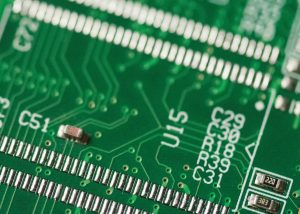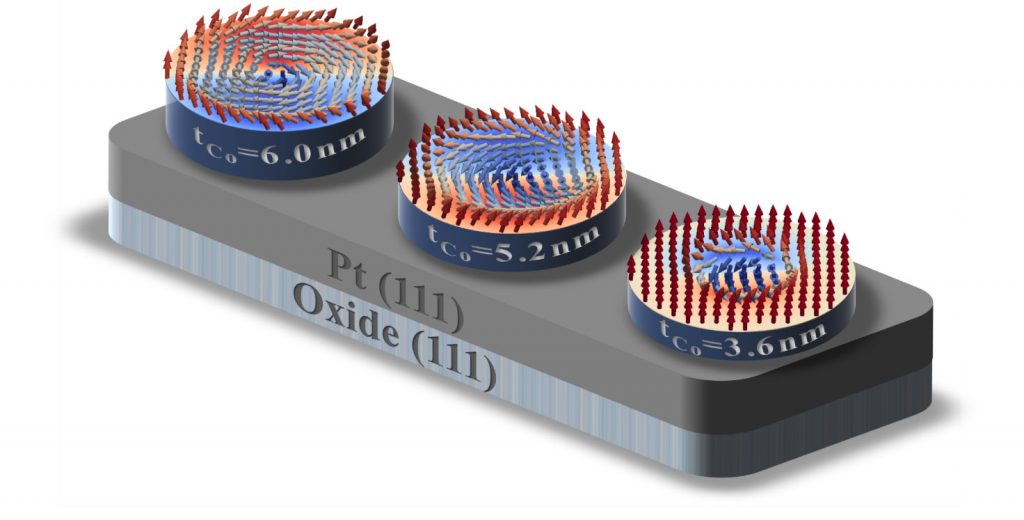NEWS
SOgraphMEM PhD theses
Dr. Adrian Gudin Holgado, Nov. 2022 (director: Paolo Perna), at IMDEA Nanociencia/Universidad Autonoma de Madrid
Dr. Pablo Olleros-Rodríguez, September 2021 (director: Paolo Perna, Oxana Fesenko), at IMDEA Nanociencia/Universidad Autonoma de Madrid
Dr. L. de Melo Costa, July 2021 (directors: Paolo Perna, Manuel Valvidares), at IMDEA Nanociencia/Universidad Autonoma de Madrid
Dr. Matthieu Grellier, Sept. 2023 (director: Vincent Cros), at CNRS-UMPhy (and in collaboration with SOLEIL and ALBA),
Mrs. D Mazhjoo, expected PhD defence in 2024 (director: S. Blugel and G. Bihlmayer), at Julich
SOgraphMEM on-line PhD thesis defense of:
Pablo Olleros Rodriguez
Skyrmion Stabilization and Non-Equilibrium Nucleation Routes in Ultrathin Cobalt-Based Magnetic Trilayers
Física de la Materia Condensada, Nanociencia y Biofísica – Universidad Autonoma de Madrid, Madrid (Spain)
29-09-2021 11:00 VIRTUAL
Supervisors: Dr. Paolo Perna, IMDEA Nanociencia and Dr. Oksana a Chubykalo-Fesenko, ICMM-CSIC
You can join the meeting in zoom with these data:
meeting ID: 970 7989 8784
access code: 547832
Low-power electronics with a spin
By: Letizia Diamante
20/08/2020

Graphene-based layer engineering goes beyond classical computer memory
Modern-day technology, like smartphones, personal computers and fitness devices, produces a tremendous amount of data that our computers need to process very quickly. This means there is a persistent, rapidly increasing demand for new, fast, low-power devices with an enhanced ability to store information. Graphene-enabled spin logic devices could surpass Moore’s law predictions and shape the future of computing.
The Graphene Flagship interviewed Paolo Perna, Group Leader at Graphene Flagship partner IMDEA Nanociencia, in Spain, who leads the SOgraphMEM consortium funded as part of the 2019 FLAG-ERA Joint Transnational Call. SOgraphMEM stands for Spin Orbit functionalized GRAPHene for resistive-magnetic MEMories.
SOgraphMEM also involves Graphene Flagship Associate Members ALBA Synchrotron (Spain), NaMLab GmbH, Jülich Research Centre (Germany), SOLEIL (France) and the Catholic University of Leuven (Belgium), in addition to Graphene Flagship partners CNRS and Thales, France.
Why are spin logic devices so interesting?
In spin logic devices, the basic logic operations are performed by exploiting the spin of electrons. Spins are used as bits – the units of digital information. Ones and zeros are represented with «up» and «down» spins, whereas conventional electronics rely exclusively on the flow of electric charges. The combination of spin and electronics, called spintronics, can reduce the energy consumption of electronic devices, and make them faster.
However, to operate with spins, we need to be able to control and manipulate them. For example, we might want to modify their collective direction, or select a particular spin with a spin filter. One of the most efficient ways to manipulate electron’s spins is to exploit the interaction between spin and orbital motion: the spin–orbit (SO) coupling. This leads to interesting new phenomena and underpins another field of electronics, called spin-orbitronics.
What are the applications of spin-orbitronics?
Typical examples are SO-based magnetic random-access memories (SO–MRAMs), which one day could replace our computer memory architectures, such as the RAM, ROM and cache.
While current devices write and read information via mechanical processes with limited reliability and speed, we can exploit SO interactions and engineer materials where the spins align and whirl in peculiar configurations, forming the so-called topological spin textures. Stable against thermal fluctuations, these are only a few nanometers in size, and could become our new-generation bits.
What are the goals of the SOgraphMEM project? And why did you choose to use graphene?
The overarching objective of SOgraphMEM is to design, fabricate and test electrically tunable SO devices, combining the properties of graphene, magnetic materials and ferroelectricity.
We aim to choose materials that can create stable topologically spin textures with long spin lifetime and propagation. We demonstrated that graphene, coupled with ferromagnets and heavy metals, meets all these requirements, even at room temperature.
In addition, graphene allows for the efficient tuning of the device’s magnetic properties by electric fields.
Can you tell us about your most recent accomplishments?
We created devices with a thin sheet of a ferromagnetic metal, cobalt, sandwiched between layers of heavy metal (HM) and graphene. The spins at the interface between graphene/Co and Co/HM were stabilised by local exchange interactions, known as the Dzyaloshinskii–Moriya interaction, creating a chiral and stable spin texture in the device.1
By adding a ferroelectric layer – a material that retains the electric polarization – on top of graphene, we will be able to modify the magnetic properties of the system with an external electric voltage: a step towards resistive switching memories.
What’s the next step for this research?
In the very near future, we will use our graphene-based devices for spin-caloritronics. We want to modify the spin-dependent properties with thermal gradients. We intend to study voltage-controlled neuromorphic devices, which mimic the way the brain memorises and processes complex tasks.
References
1. F. Ajejas, et al. «Unraveling Dzyaloshinskii–Moriya interaction and chiral nature of graphene/cobalt interface.» Nano Letters, 18 (9), 5364-5372 (2018)
2. F. Ajejaset al.. «Thermally Activated Processes for Ferromagnet Intercalation in Graphene-Heavy Metal Interfaces.» ACS Applied Materials & Interfaces, 12 (3), 4088-4096 (2019)
3. P. Olleros-Rodríguez, et al. «Intrinsic mixed Bloch-Néel character and chirality of skyrmions in asymmetric epitaxial trilayer.» ACS Applied Materials & Interfaces, 12 (22), 25419-25427 (2020)
Stable skyrmions in graphene-based epitaxial trilayers
8/06/2020

Intrinsic mixed Bloch-Néel character of skyrmions in Graphene-based confined nano-dot geometry for different ferromagnetic thicknesse. Image credit: ACS Appl. Mater. Interfaces
Recent advances on the stabilization and manipulation of chiral magnetization configurations in systems consisting in alternating atomic layers of ferromagnetic and non-magnetic materials hold promise of innovation in spintronics technology. The low dimensionality of the systems promotes spin orbit driven interfacial effects like antisymmetric Dzyaloshinskii-Moriya interactions (DMI) and surface magnetic anisotropy, whose relative strengths may be tuned to achieve stable nanometer sized magnetic objects with fixed chirality, which are proposed as carriers of information in future spin-orbitronics technology.
While in most of the cases this is obtained by engineering complex multilayers stacks in which interlayer dipolar fields become important, a research team guided by Dr. Paolo Perna at IMDEA Nanociencia and by Oksana Chubykalo-Fesenko at ICMM-CSIC, has considered a simple epitaxial trilayer in which a ferromagnet (namely Cobalt, Co), with variable thickness, is embedded between a heavy metal and graphene. The latter enhances the perpendicular magnetic anisotropy of the system, promotes a Rashba-type DMI, and can sustain very long spin diffusion length. The work, mostly performed by the PhD student they supervise Mr. Pablo Olleros-Rodriguez, consists in the development of a layer-resolved micromagnetic model capable to account for the low dimensionality nature of the interactions, which leads to macroscopic parameters that depend on the thickness of the ferromagnetic layer.
We demonstrate that our model correctly reproduces the experimental magnetization configurations and the spin reorientation transition. In particular, we are able to predict the experimental parameters that will lead to Néel, Bloch or mixed chiral skyrmions. Our results demonstrate that for samples with Co thickness larger than 3.6 nm intrinsic mixed (predominantly Bloch-type) skyrmions are stabilized in 256 nm wide dots.
This work is a collaboration between «SpinOrbitronics» group led by Paolo Perna (IMDEA Nanociencia) and Oksana Chubykalo-Fesenko (ICMM-CSIC) and has been partially funded by the FLAG ERA grant SOgraphMEM, NANOMAGCOST (Comunidad de Madrid), FUN-SOC-RTI2018, SKYTRON-FIS2016, and the Severo Ochoa Programme for Centres of Excellence in R&D awarded to IMDEA Nanociencia.
FLAG-ERA is an ERA-NET (European Research Area Network) initiative that aims to create synergies between new research projects and the Graphene Flagship and Human Brain Project. The goals and activities of FLAG-ERA are, in close connection with the Flagships, to set up mechanisms to facilitate and encourage integration of nationally/regionally funded research into the Flagship work plans. The project SOgraphMEM, recommended for funding to the national/regional research funding organisations of FLAG-ERA by the Joint Translational Call (JTC) 2019 Steering Committee, has recently been chosen as Partnering Project of the Graphene Flagship amongst other 16 newly-funded projects that will receive around €11 million in funding overall. SOgraphMEM is coordinated by Dr. Perna and will investigate the promising of graphene in spintronics, particularly it will test specific materials for a novel branch of spintronics called spin-orbitronics exploiting electron spin and momentum.

Reference:
Pablo Olleros-Rodríguez, Ruben Guerrero, Julio Camarero, Oksana Chubykalo-Fesenko, and Paolo Perna. ACS Appl. Mater. Interfaces 2020, 12, 22, 25419–25427.
DOI: https://doi.org/10.1021/acsami.0c04661
Contact:
Dr. Paolo Perna
http://www.nanociencia.imdea.org/spinorbitronics/group-people
https://sites.google.com/site/spinorbitronics/
IMDEA Nanociencia Outreach Office
divulgacion.nanociencia@imdea.org
+34 91 299 87 12
Twitter: @imdea_nano
Facebook: @imdeananociencia
Fuente: IMDEA Nanociencia


